I'm trying to set a column in one table to a random foreign key for testing purposes. I attempted using the below query
update table1 set table2Id = (select top 1 table2Id from table2 order by NEWID())
This will get one table2Id at random and assign it as the foreign key in table1 for each row. It's almost what I want, but I want each row to get a different table2Id value.
I could do this by looping through the rows in table1, but I know there's a more concise way of doing it.

